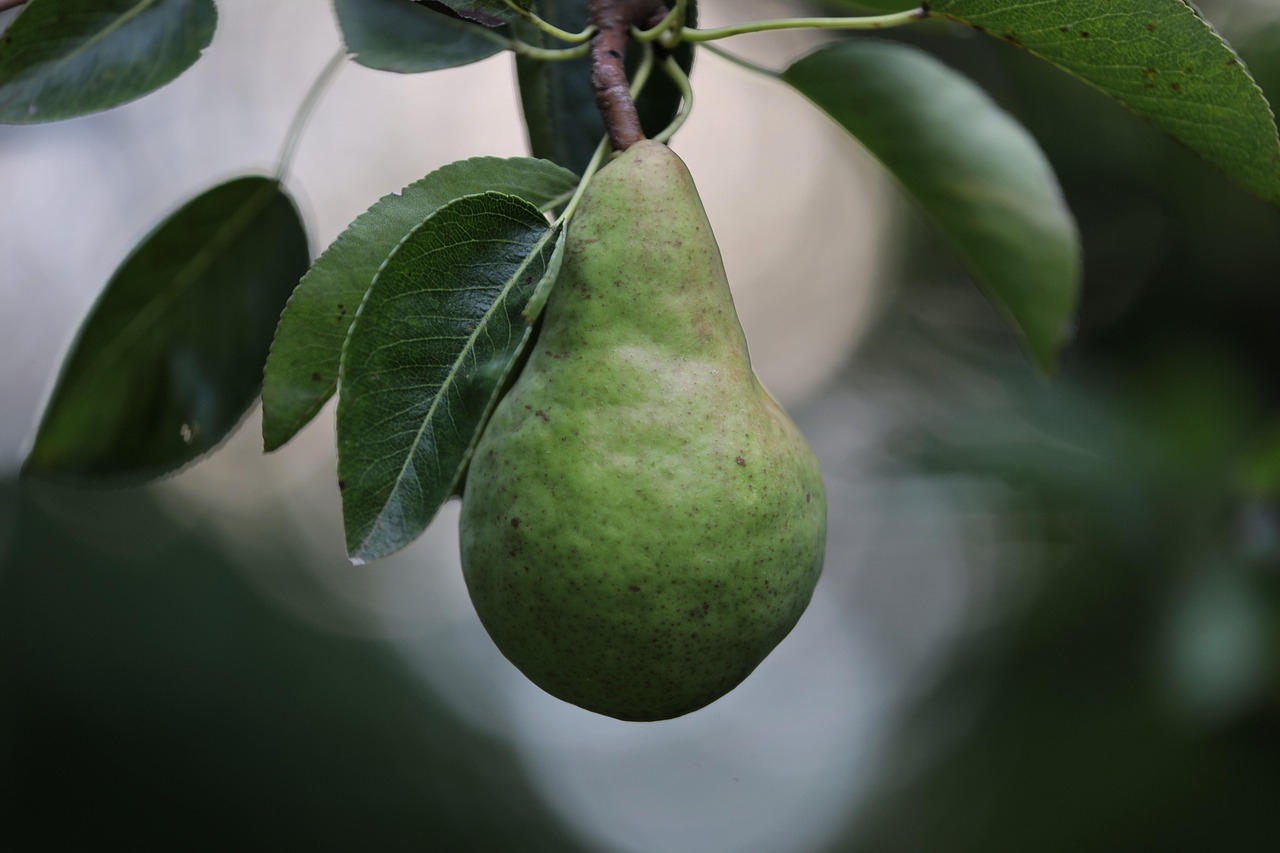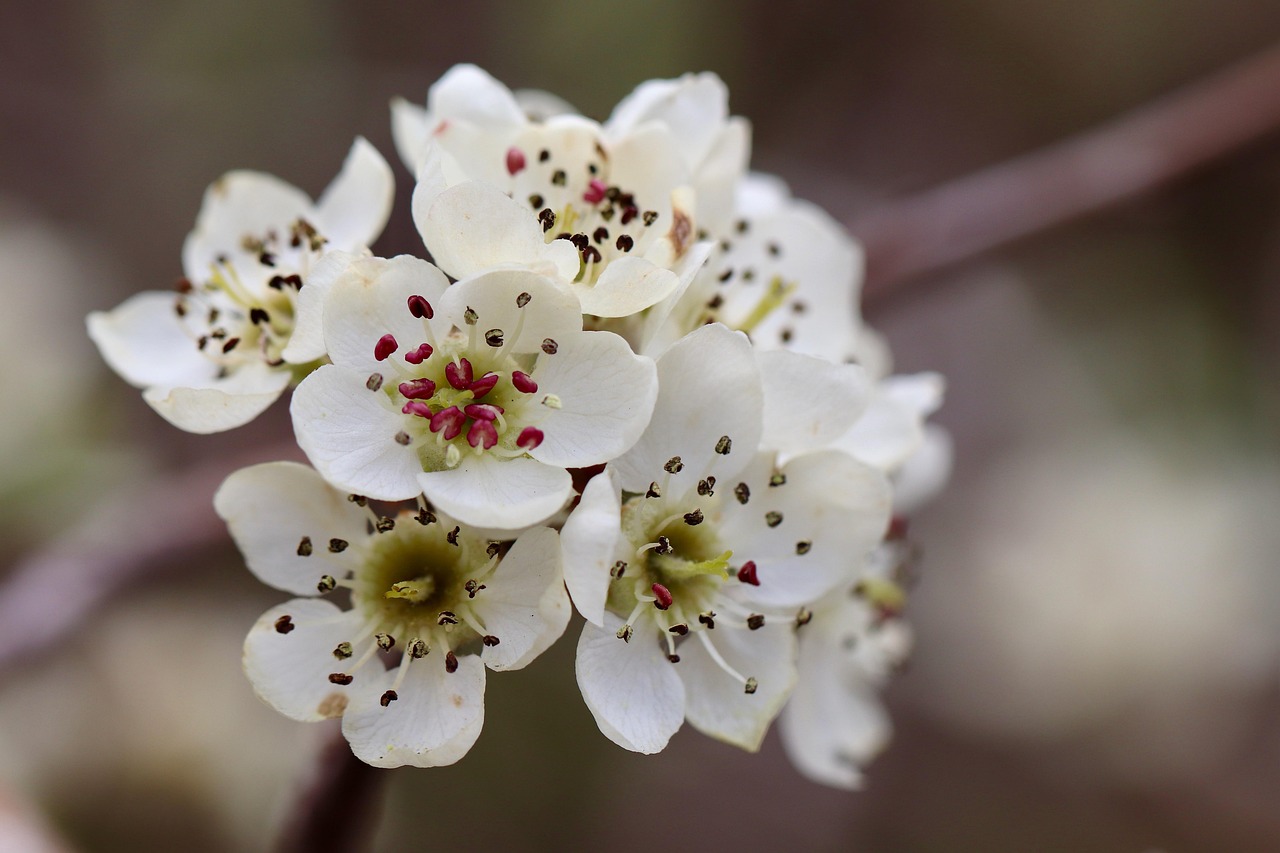Snow pear tree pruning is essential for maintaining the health and aesthetics of the tree. Proper pruning enhances air circulation, promotes fruit production, and shapes the tree for unique landscape designs.
The snow pear tree, known for its stunning white blossoms and delicious fruit, is a popular choice among gardeners. Native to East Asia, this tree has adapted well to various climates. It thrives in well-drained soil and prefers full sunlight. However, to achieve optimal health and beauty, regular pruning is crucial.

Pruning not only helps maintain the shape of the snow pear tree but also encourages new growth. By cutting away dead or diseased branches, you allow the tree to focus its energy on producing healthy leaves and fruit. Additionally, pruning can improve the overall structure of the tree, making it more resistant to wind and heavy fruit loads.
Understanding Snow Pear Tree Growth
Before delving into pruning techniques, it is important to understand how snow pear trees grow. These trees can reach heights of 20-30 feet with a spread of 15-25 feet. The growth habit is typically upright with a rounded canopy. Here are some key growth characteristics:
| Characteristic | Description |
|---|---|
| Height | 20-30 feet |
| Spread | 15-25 feet |
| Growth Habit | Upright with a rounded canopy |
| Flowering Season | Spring (April to May) |
| Fruit Bearing | Late summer to early fall |
Understanding these characteristics will help you assess your snow pear tree’s needs and determine the best times for pruning. Generally, the ideal time to prune is during the late winter or early spring before new growth begins. This timing minimizes stress on the tree and allows for quicker recovery.

Essential Pruning Techniques
When it comes to pruning snow pear trees, several techniques can be employed. Each method serves a specific purpose and can enhance the overall health of the tree:
- Thinning: This technique involves removing select branches to improve air circulation within the canopy. Thinning helps prevent disease and allows sunlight to reach all parts of the tree.
- Crown Reduction: If a snow pear tree becomes too tall or wide, crown reduction can be performed. This involves shortening branches to reduce the overall size while maintaining the tree’s natural shape.
- Dead Wood Removal: Regularly check for and remove any dead or diseased branches. This not only improves appearance but also reduces the risk of pests and diseases.
- Shaping: For aesthetic purposes, shaping involves strategically cutting branches to achieve a desired look. This is particularly important for landscape design, where visual appeal is key.
Using these techniques effectively will enhance your snow pear tree’s beauty while promoting its health and productivity. Always use clean, sharp tools to make precise cuts. This reduces the risk of injury to the tree and minimizes the potential for infection.
Tools Required for Pruning
Having the right tools is essential for effective pruning. Here are some tools you should consider using:

- Hand Pruners: Ideal for small branches up to ¾ inch thick.
- Loppers: Suitable for thicker branches up to 1-2 inches in diameter.
- Saws: Needed for larger branches that cannot be cut with pruners or loppers.
- Pruning Shears: Helpful for precise cuts on delicate areas.
- Gloves: Protect your hands while working.
Using these tools properly will make your pruning experience more efficient and enjoyable. Ensure they are regularly maintained and cleaned before each use to avoid transferring diseases between plants.
Common Mistakes to Avoid
Pruning can be a straightforward task, but there are common mistakes that many novice gardeners make. Here are some pitfalls to avoid:
- Over-pruning: Removing too much foliage can stress the tree and reduce fruit yield.
- Poor Timing: Pruning at the wrong time can lead to excessive sap loss or damage from frost.
- Ignoring Tree Structure: Not considering the natural shape of the tree can lead to unattractive results.
- No Clean Cuts: Jagged cuts can lead to infections; always aim for clean, angled cuts.
Avoiding these mistakes will help ensure your snow pear tree remains healthy and vibrant in your landscape. Regular maintenance through proper pruning creates an inviting environment for both you and your garden’s wildlife.

Seasonal Pruning Strategies
Understanding the seasonal needs of your snow pear tree can significantly influence its health and fruit production. Different times of the year call for specific pruning strategies. By tailoring your approach to the seasons, you can enhance the tree’s growth and ensure a bountiful harvest.
Winter Pruning
Winter is often regarded as the best time for major pruning activities. During this period, the tree is dormant, which minimizes stress and promotes healing. Here are some key points for winter pruning:
- Focus on Structure: Assess the tree’s structure and remove any crossed or poorly positioned branches to improve airflow.
- Shape the Canopy: Trim back excessive growth to maintain a balanced canopy shape, promoting even sunlight exposure.
- Remove Deadwood: Clear out any dead or diseased branches, as they can harbor pests and diseases when spring arrives.
This winter pruning not only prepares the tree for the growing season but also helps prevent potential issues with pests and diseases.
Spring Pruning
Spring marks the beginning of new growth and is also a critical time for pruning. However, the focus should be different from winter pruning:
- Light Pruning: Remove any weak or damaged growth that may have developed over the winter without drastically altering the tree’s structure.
- Encourage New Growth: As new shoots appear, selectively prune to encourage robust growth and fruit production.
- Monitor Health: Check for signs of disease or pests and address them promptly through pruning.
Timing is crucial in spring pruning, as it should be done before the tree fully leafs out. This allows for strategic cuts that promote health without compromising new growth.
Pruning for Fruit Production
Snow pear trees are known for their delicious fruit, and proper pruning can significantly enhance fruit yield. Pruning techniques should aim to maximize both quality and quantity of fruit.
Promoting Air Circulation
A key factor in fruit production is ensuring adequate air circulation throughout the tree. Poor air circulation can lead to fungal diseases and reduced fruit set. Here are some strategies:
- Selective Thinning: Thin out crowded branches to improve airflow, especially in the center of the canopy.
- Avoid Dense Growth: Maintain a balanced structure without excessive foliage, which can inhibit sunlight penetration.
- Target Fruit-bearing Branches: Focus on pruning branches that are older than three years, as these tend to produce less fruit over time.
Encouraging New Fruit Spurs
New growth typically produces the best fruit, so encouraging spurs is vital. Here’s how you can achieve this:
- Shorten Long Branches: Trim back long branches to encourage lateral shoots that will bear fruit.
- Prune After Harvest: After harvesting, prune back spent fruiting wood. This encourages fresh growth for the next season.
- Use Proper Techniques: Make clean cuts at an angle just above a bud to promote healthy new growth.
By focusing on these aspects of pruning, you can significantly enhance your snow pear tree’s fruit production year after year.
Creating Unique Landscape Designs
The snow pear tree is not only valued for its fruit but also for its ornamental qualities. With proper pruning techniques, you can shape your tree to fit unique landscape designs.
Shaping Techniques
Shaping your snow pear tree can enhance its beauty and fit into various garden styles. Here are some popular shaping techniques:
- Candelabra Style: This technique involves creating multiple upright branches that resemble candelabra arms. It provides an elegant look while maintaining an open canopy.
- Espalier: Training your snow pear tree against a fence or wall creates a stunning vertical display. Regular pruning is essential to maintain this design.
- Bonsai Technique: For a more artistic approach, consider bonsai techniques. This requires careful pruning and shaping to create a miniature form of the tree.
Color and Texture Considerations
The unique texture and color of snow pear leaves and flowers add depth to your landscape. When planning your garden design, consider these factors:
- Flowering Time: The stunning white flowers bloom in spring, providing a beautiful contrast against other seasonal plants.
- Foliage Color: The leaves turn a vibrant green in summer, adding richness to your landscape.
- Fall Foliage: In autumn, leaves transition to shades of yellow and orange, contributing to seasonal interest.
By understanding how to shape and utilize the snow pear tree in your landscape design, you can create visually appealing outdoor spaces that thrive throughout the year.
Pest and Disease Management for Snow Pear Trees
Maintaining a healthy snow pear tree involves not only proper pruning but also managing pests and diseases that can affect its growth. Understanding common threats and implementing preventive measures ensures your tree remains vibrant and productive.
Common Pests
Several pests can pose challenges to snow pear trees. Awareness of these pests allows for timely intervention:
- Codling Moth: This pest lays its eggs inside the fruit, causing it to rot. Regular monitoring and traps can help manage their population.
- Scale Insects: These insects attach to branches and sap, weakening the tree. Pruning infested areas can reduce their impact.
- Spider Mites: These tiny pests thrive in hot, dry conditions, causing leaf discoloration. Increasing humidity or applying insecticidal soap can help control them.
Disease Threats
Snow pear trees are susceptible to various diseases that can hinder growth and fruit production. Here are some common diseases:
- Fire Blight: This bacterial disease causes branches to wilt and turn black. Prune away affected areas immediately, ensuring tools are disinfected between cuts.
- Powdery Mildew: This fungal infection appears as white powder on leaves. It can be treated with fungicides or by increasing air circulation around the tree.
- Canker Diseases: These involve dead patches on branches. Remove affected branches to prevent further spread.
Watering and Fertilizing Practices
Proper watering and fertilizing practices are essential in supporting the health of your snow pear tree. Understanding the needs of your tree can promote robust growth and fruit development.
Watering Guidelines
Snow pear trees require a consistent watering schedule, especially during dry spells. Here are some tips for effective watering:
- Deep Watering: Water deeply once or twice a week, ensuring moisture reaches the root zone.
- Avoid Overwatering: Ensure the soil drains well to prevent root rot. Test the soil moisture before watering.
- Mulching: Apply a layer of mulch around the base of the tree to retain moisture and suppress weeds.
Fertilizing Techniques
Fertilizing supports healthy growth and fruit production. However, it is crucial to use the right type and amount of fertilizer:
- Use Balanced Fertilizers: A balanced fertilizer with equal parts nitrogen, phosphorus, and potassium is ideal.
- Timing Matters: Fertilize in early spring before new growth begins for optimal results.
- Avoid Over-Fertilization: Too much fertilizer can lead to excessive leaf growth at the expense of fruit production.
Regularly testing your soil can also help determine nutrient deficiencies, allowing you to adjust your fertilization practices effectively.
Winter Protection Strategies
Winter can pose challenges for snow pear trees, especially in regions with harsh conditions. Implementing protective measures helps ensure their survival through colder months.
Mulching for Insulation
A layer of mulch around the base of the tree can provide insulation against cold temperatures. Here’s how to do it effectively:
- Select Appropriate Mulch: Use organic materials like straw, wood chips, or shredded bark.
- Avoid Piling Against the Trunk: Keep mulch several inches away from the trunk to prevent rot.
- Apply Generously: A 3-4 inch layer is typically sufficient for insulation while retaining moisture.
Protection from Frost
Frost can damage blossoms and young fruit. Here are strategies for protecting your snow pear tree from frost:
- Covering Trees: Use frost cloths or blankets on cold nights to shield blossoms.
- Strategic Planting: Plant trees in locations that are less prone to frost pockets, such as higher ground.
- Avoid Late Pruning: Delay pruning until after the danger of frost has passed to preserve blooms.
Taking these precautions will help ensure that your snow pear tree survives winter and thrives in the growing seasons ahead.
Harvesting Snow Pears
The ultimate goal of nurturing your snow pear tree is to enjoy its delicious fruit. Knowing when and how to harvest is essential for maximizing flavor and quality.
Timing the Harvest
The right time to harvest snow pears depends on several factors, including climate and variety. Here are some signs that indicate readiness for harvest:
- Color Change: Monitor the color of the fruit; they should turn yellowish-green when ripe.
- Slight Softness: Gently squeeze the pears; they should yield slightly under pressure but not feel mushy.
- Taste Test: Sampling a pear can provide the best indication of ripeness; it should taste sweet and juicy.
Harvesting Techniques
Proper harvesting techniques help avoid damaging the tree and ensure fruit quality:
- Cut, Don’t Pull: Use pruning shears to cut the stem rather than pulling the fruit off, which can damage branches.
- Handle with Care: Place harvested pears gently in baskets or containers to prevent bruising.
- Harvest in Dry Conditions: Aim to harvest on a dry day to avoid moisture-related issues during storage.
With careful attention to harvesting practices, you can enjoy a bountiful yield from your snow pear tree while ensuring future productivity.
Maintaining the Aesthetic Appeal
Beyond pruning and harvesting, ongoing care for snow pear trees contributes significantly to their aesthetic appeal in your landscape. Regular maintenance not only ensures a healthy tree but also enhances its visual contribution to your garden or yard.
Seasonal Care
Throughout the year, different seasonal tasks can help maintain the beauty and health of your snow pear tree:
- Spring Cleanup: After winter, remove any debris or leaves that may have accumulated around the base of the tree. This prevents pests and diseases from taking hold.
- Summer Monitoring: Keep an eye on the tree during the summer months for signs of pests or diseases. Early intervention can prevent larger issues later on.
- Fall Preparation: As autumn approaches, prepare the tree for winter by ensuring it is well-watered and mulched to protect against frost.
Incorporating Companion Plants
Enhancing the landscape around your snow pear tree can create a more inviting environment. Consider incorporating companion plants that support both aesthetics and ecology:
- Flowering Plants: Planting colorful flowers around the base can attract beneficial insects, such as pollinators.
- Ground Covers: Use low-growing ground cover plants to prevent weeds and retain moisture in the soil.
- Herbs: Certain herbs can repel pests while adding fragrance and texture to your garden.
By choosing companion plants wisely, you can enhance both the health and visual appeal of your snow pear tree and its surrounding area.
Utilizing Snow Pears in Culinary Delights
The fruit of the snow pear tree is not only beautiful but also delicious. Learning how to use these pears in various culinary applications can enhance your enjoyment of this wonderful tree.
Culinary Uses of Snow Pears
Snow pears can be used in a variety of dishes, thanks to their sweet flavor and crisp texture:
- Fresh Eating: Enjoy snow pears raw as a healthy snack or add them to salads for a refreshing crunch.
- Baking: Incorporate slices into tarts, pies, or crumbles for a delightful dessert.
- Preserves and Jams: Make delicious preserves or jams that capture the flavor of fresh snow pears for year-round enjoyment.
- Smoothies: Blend them into smoothies for a nutritious boost.
Experimenting with these culinary ideas can make your harvest more rewarding and enjoyable.
Final Thoughts
Caring for a snow pear tree involves understanding its unique needs, from pruning and pest management to seasonal care and harvesting. By implementing effective pruning techniques, gardeners can shape their trees for both health and aesthetic purposes. Proper maintenance throughout the year ensures that these trees not only thrive but also contribute beautifully to any landscape.
The snow pear tree provides delicious fruit and stunning seasonal displays. With thoughtful planting, care, and utilization of its fruits, you can create a vibrant garden that offers both beauty and bounty. Embrace the journey of growing and caring for your snow pear tree, and enjoy the unique landscapes they create in your outdoor spaces.
Your snow pear tree has the potential to be an integral part of your garden, offering visual appeal, delicious fruit, and a connection to nature. By following the guidelines provided in this article, you can ensure that your tree remains healthy and vibrant for years to come.
